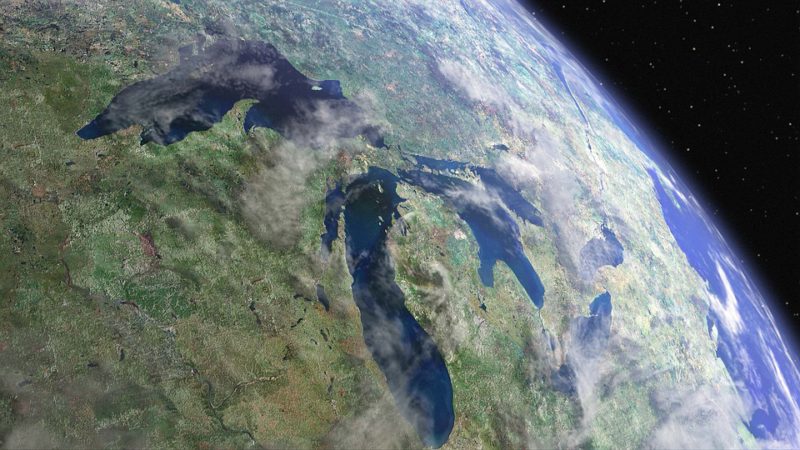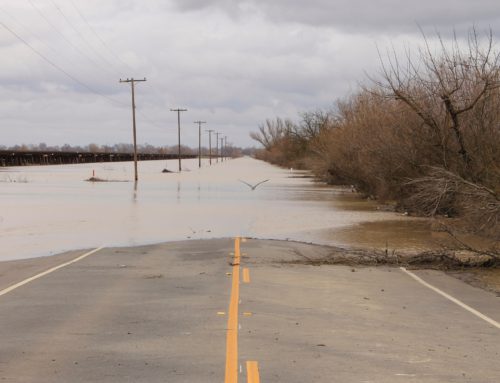Global climate change is already taking visible tolls on our environment. From melting ice caps to superstorms, its severe implications for our environment are changing our everyday world.
Every region will be affected by the crisis differently. In the Great Lakes region, climate change will have profound short and long-term effects not only on the environment but also the economy. As we gauge how the Great Lakes climate will change, we also have to account for how it will impact local society..
Environmental Impacts
Earlier studies predicted that climate change could largely benefit or only marginally impact the Great Lakes region over the next 100 years. However, more recent data suggests a bleaker outcome in many environmental areas.
Agriculture:
- A U.S. Global Change Research Program Report finds that climate change may have a positive short term impact on agriculture. Growing seasons will be longer with increased yields for soybean and corn crops. In addition, warmer weather may be beneficial for soil composition. However, in the long-term, wetter periods are projected to delay harvest or planting. Dry periods are projected during times when crops need water.
- Warmer temperatures also mean we’ll need to contend with new pests and diseases. Crop losses are predicted to increase as a longer growing season increases the opportunity for damage. A common pest of soybeans, bean leaf beetles, are reported to be migrating northwards in recent years.
- In the southern region, warmer temperatures may compromise livestock health and drier climates may limit the productivity of pastures.
Overall, technological advances and market trends should help stabilize crop and livestock sectors from climate change impacts. However, variations in climate are likely to be a destabilizing influence for smaller farms.
Forests:
- It’s predicted that the forest composition will change due to warming. The warmer temperatures will help some trees like Oak and Hickory grow. However, Maples, Beech, Birch, Spruce and Fir trees will decline. Forests may ingest less carbon dioxide because the Evergreen trees will be less plentiful.
- In the short term, increased atmospheric CO2 concentrations are likely to create forest growth. In the long-term, it’s expected that increased ground-level ozone concentrations will likely damage forest trees, potentially offsetting the positive effect of CO2.
- Atmospheric Nitrogen deposits may promote growth in forests, but the long-term consequences mean increased nitrate pollution of waterways, groundwater, and drinking water.
Water:
Lakes, streams, and wetlands will go through massive adjustments as climate change increases. Drier, warmer seasons are expected to decrease winter ice and reduce lake levels while aquatic ecosystems may experience a number of altered situations.
- Heavier rainfalls will increase erosion and reduce water quality from soiled runoff, affect transportation and degrade infrastructure.
- In lakes, summer stratification and oxygen depletion will increase, resulting in deep-water “dead zones” which will impact fish populations and other organisms.
- River flooding may become common. Land management practices, more rainstorms and urbanization may impair flood-absorbing surfaces of wetlands and floodplains. This results in more water pollution, pesticides, and acid rain.
- Refuge for aquatic organisms may decrease. Different types of land use and framanagented environments due to shrinking streams and waterways may limit dispersal of amphibians and mollusks.
- Although fish populations may grow faster in warmer waters, they may demand more food web resources. In addition, lower water levels with warmer temperatures can increase contaminants like mercury in the food chain.
- Trout, Whitefish, and other cool-water fish species will decline, especially in the southern parts of the Great Lakes. Warm-water species like smallmouth bass are expected to expand their populations northward.
- Groundwater will diminish because of low summer water levels. Streams will dry up and wetland areas will decrease, reducing wildlife habitats.
Economic, Social, and Health Impacts
- The Great Lakes region contains 84% of North America’s fresh surface water and provides drinking water to 40 million people, including U.S. and Canadian citizens. If warmer weather continues as predicted, droughts could occur causing a shortage of fresh water for households and businesses.
- Since lake levels are expected to drop, costs associated with shipping, dredging harbors and channels, water intake pipes, and other infrastructure across the Great Lakes are likely to increase. On a positive note, seasons with less ice will allow for longer shipping seasons.
- Warmer seasons could lower heating costs in winter, but higher costs for summer air conditioning may negate the savings.
- As warmer winters become frequent, winter recreation like skiing, snowmobiling, and ice fishing will result in economic losses. However, this may be offset by lengthened season for warm-weather recreation.
- Recreational fishing, hunting, and wildlife may be influenced by changing species distribution across the region.
- Health risks spurred by extreme heat may become more abundant. Air pollutants and ozone deficiencies are likely to exacerbate asthma and other respiratory diseases.
Taking Action
The predicted effects of climate change on the Great Lakes may be stressful, but policymakers and citizens can take action now to help reduce its impact. Limiting greenhouse gas emissions and air pollution while taking steps to reshape public health management and building codes, and shifts in fishery management can help locals prepare for extreme weather and environmental changes.
Climate change has already left its mark on the Great Lakes region, but waiting to act will result in greater expense and environmental losses. Taking action now will help save collateral costs and improve habitats and recreational opportunities for future generations.







Leave A Comment